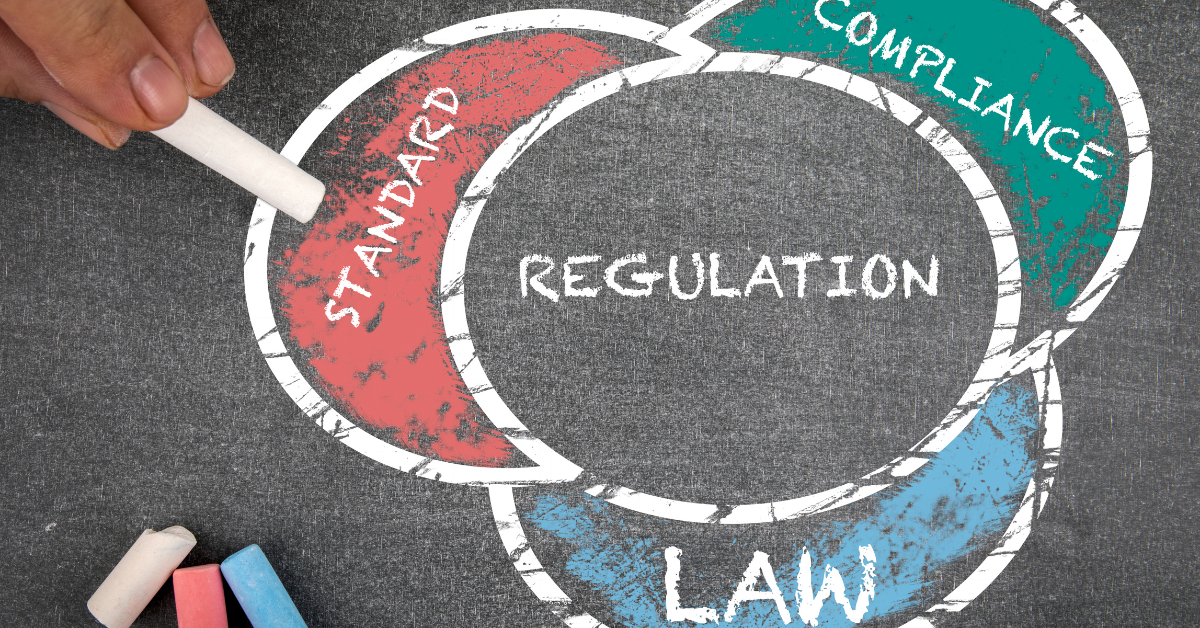
In restricted and reduced practice authority states, finding the right collaborating physician is crucial for nurse practitioners (NPs) to comply with regulatory requirements and excel in their practice.
This guide will offer practical tips to help you navigate the process efficiently and effectively.
Understanding the Importance of Collaboration
Collaboration between nurse practitioners and physicians is not just a regulatory formality—it can significantly impact the quality of care delivered to patients. Collaboration ensures that NPs have access to the guidance of a physician and comply with state requirements.
Moreover, this partnership allows for a more comprehensive approach to healthcare, combining the strengths and expertise of both roles. Collaboration is useful in addressing complex patient needs and ensuring holistic care. Effective collaboration can also lead to higher patient satisfaction and better adherence to treatment plans.
Why Collaboration Matters
Collaboration between NPs and physicians allows for a comprehensive approach to patient care. Physicians can offer their medical expertise and clinical experience, while NPs can contribute their unique patient-centered approach and advanced nursing skills.
Effective collaboration can help in managing workload and reducing burnout among healthcare providers. It also fosters a supportive environment where both NPs and physicians can learn from each other and grow professionally. Ultimately, this collaborative approach translates into better patient care and a better healthcare system.

1. Know Your State’s Regulatory Requirements
Each state has specific laws and regulations governing NP and physician collaboration. Familiarizing yourself with these requirements is a critical first step. Understanding these legal stipulations can help you avoid potential pitfalls and ensure that your practice remains compliant.
Collaboration Compliance
Ensure you understand the scope of practice and type of collaboration agreement required in your state. This includes knowing how often you must meet with your collaborating physician and what documentation is necessary. Keeping abreast of any changes in regulations is also crucial, as laws can evolve, impacting your practice.
Additionally, some states have specific requirements regarding the proximity of the collaborating physician, the number of NPs a physician can collaborate with, and the types of services that can be provided under a collaborative agreement. Being well-informed about these details will help you establish a compliant and effective collaborative relationship.
Thankfully, Zivian Health handles all the challenges of collaboration compliance for you. Zivian helps you store collaborative agreements, track evolving state regulations, and our team of specialists provide ongoing support.
2. Identify Your Needs
Before choosing a collaborating physician, identify your specific needs. Consider the type of practice you are in, your patient population, and the areas where you need the most support. Assessing your needs will help you find a physician whose expertise aligns with your practice goals.
Specialization and Practice Focus
We recommend finding a physician whose specialization aligns with your practice area. For instance, if you are in primary care, a family medicine physician may be ideal. Conversely, if you specialize in a particular field such as pediatrics or geriatrics, seek out a physician with expertise in that area.
Understanding the specific needs of your practice will also help you articulate what you are looking for during your search. This clarity can facilitate more productive discussions and lead to a more effective collaboration.
3. Try Networking and Professional Associations
Networking is a powerful tool when looking for a collaborating physician. Professional associations and local medical societies can provide valuable connections. Joining these organizations can open doors to meet potential collaborators and stay updated on industry trends.
Attend Industry Events
Participate in industry conferences, workshops, and seminars. These events are excellent opportunities to meet potential collaborators and learn more about best practices in collaboration. Engaging in these events can also help you expand your professional network and gain insights from experienced practitioners.
In addition to in-person events, consider attending virtual conferences and webinars. These platforms can also provide valuable networking opportunities and allow you to connect with professionals from different regions. The more you engage with your professional community, the more likely you are to find a suitable collaborating physician.

4. Use Online Resources and Databases
There are several online platforms and databases where you can find information about potential collaborating physicians. These resources can be particularly useful if you are looking to expand your search beyond your immediate geographic area.
Zivian Health provides nurse practitioners with access to a nationwide network of experienced physicians. We can quickly pair you with a collaborator that matches your specialty and scope of practice.
5. Conduct Thorough Interviews
Once you have identified potential collaborating physicians, conducting thorough interviews is essential. This will help ensure that the physician is a good fit for your practice and collaboration needs. Taking the time to ask the right questions can prevent future misunderstandings and conflicts.
Key Interview Questions
Prepare a list of questions focusing on their experience, approach to patient care, and expectations from the collaboration. Discuss scenarios to understand how they handle clinical decision-making and emergencies. Inquire about their availability and willingness to engage in regular meetings and communication.
Additionally, ask about their familiarity with NP practice and their previous experience working with NPs. Understanding their perspective on collaboration and their commitment to the relationship is crucial for a successful partnership. The interview process is your opportunity to gauge compatibility and establish a strong foundation for collaboration.

6. Establish Clear Communication
Effective communication is the cornerstone of a successful collaboration. Both parties should be clear about their roles, responsibilities, and expectations. Transparent communication can prevent misunderstandings and ensure that both parties are aligned in their goals.
Setting Up Regular Meetings
Decide on the frequency and format of your meetings. Whether it’s weekly check-ins or monthly reviews, consistency is key to maintaining a strong collaborative relationship. Regular meetings provide an opportunity to discuss patient cases, share updates, and address any concerns.
Consider using various communication tools such as video conferencing, phone calls, and secure messaging platforms to facilitate regular interactions. Establishing a clear communication protocol will help you stay connected and ensure that both parties are actively engaged in the collaboration.
7. Draft a Comprehensive Agreement
A well-drafted collaboration agreement outlines the roles and responsibilities of both the NP and the physician. It should also include protocols for common clinical situations. Having a detailed agreement can serve as a reference point and guide for the collaboration.
Legal Considerations
It is important to ensure that your agreement complies with state laws and covers all necessary aspects, including liability and confidentiality.
The agreement should also specify the terms of termination and the process for resolving disputes. A comprehensive agreement can provide clarity and prevent conflicts, ensuring a smooth and effective collaboration.
Zivian Health makes this part of the process simple — we draft your collaboration agreement and ensure that all necessary paperwork is submitted to the state boards as required.

8. Don’t Forget About Proximity Requirements
Some states have proximity requirements that dictate how far an NP can be from their collaborating physician. Understanding and complying with these requirements is essential. Failure to adhere to proximity regulations can lead to legal issues and impact your practice.
Utilizing Technology
If your state allows for remote collaboration, leverage telehealth and electronic communication tools to maintain compliance while ensuring effective collaboration. Telemedicine platforms can facilitate remote consultations and meetings, allowing you to stay connected with your collaborating physician.
Using technology to bridge the distance can help you overcome geographic limitations and ensure that your collaboration remains effective and compliant. Embracing these tools can enhance your ability to provide high-quality care and maintain a strong collaborative relationship.
9. Continuous Professional Development
Both NPs and collaborating physicians should engage in continuous professional development to keep up with the latest medical practices and innovations. Staying updated on current research and advancements in healthcare will help you provide the best patient care.
Joint Training Sessions
Consider organizing joint training sessions and continuing education opportunities. This not only enhances skills but also strengthens your collaborative relationship. Participating in these activities together can foster mutual respect and a deeper understanding of each other’s roles.
Joint training sessions provide an opportunity to address any knowledge gaps and ensure that both parties are aligned in their clinical approach. Continuous professional development is key to maintaining a high standard of care and a successful collaboration.
10. Evaluate and Adjust
Regularly evaluate the collaboration to identify areas for improvement. Both parties should be open to feedback and willing to make adjustments as needed. Ongoing evaluation ensures that the collaboration remains effective and aligned with your practice goals.
Performance Metrics
Consider using performance metrics and patient outcomes to assess the effectiveness of the collaboration. Regular reviews can help in making necessary adjustments to improve care delivery. Discussing these metrics during your meetings can provide valuable insights and guide your collaborative efforts.
Additionally, consider conducting periodic surveys or feedback sessions to gather input from patients and staff. This feedback can help you identify strengths and areas for improvement, ensuring that your collaboration continues to evolve and improve patient care.
How Zivian Health Helps Nurse Practitioners Find and Maintain Compliant Collaborations
Zivian Health’s mission is to make it easier for nurse practitioners to stay focused on their practice and their patients.
Finding you an experienced, reliable collaborator is where we begin. But we also manage all the elements of compliance and quality – we house your collaborative relationships, track your meetings and chart reviews, and our team of clinical and regulations specialists are here to support you whenever you need it.
Perhaps most importantly, Zivian exists to create ripple effects in as many communities as we can. Patients suffer most from the inequities in our health system, and benefit most when the system works as it should. We are proud to support dedicated, compassionate practitioners who are working every day to improve the overall health of their communities.
Finding the right collaborating physician requires careful planning, thorough research, and ongoing communication. By following these tips, nurse practitioners can establish effective and compliant collaborative relationships that enhance patient care and professional satisfaction.